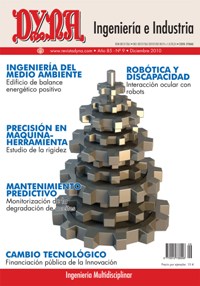STUDY OF THE STIFFNESS FOR PREDICTING THE ACCURACY OF MACHINE TOOLS
Keywords:
Torneado, rectificado, precisión, rigidez, MEF, parámetros concentrados.Abstract
Machining processes are frequently faced with the challenge of achieving more and more precision and surface qualities. These requirements are usually attained taking into account some process variables, including the cutting parameters and the use or not of refrigerant, leaving aside the mechanical aspects associated with the influence of machine tool itself. There are many sources of error linked with machine-workpiece interaction, but, in general, we can summarize them into two types of error: quasi-static and dynamic. This paper shows the influence of quasi-static error caused by low machine rigidity on the accuracy applied on two very different processes: turning and grinding. For the study of the static stiffness of these two machines, two different methods are proposed, both of them equally valid. The first one is based on separated parameters and the second one on finite elements.Downloads
Published
2010-11-30
Issue
Section
ARTICULOS

